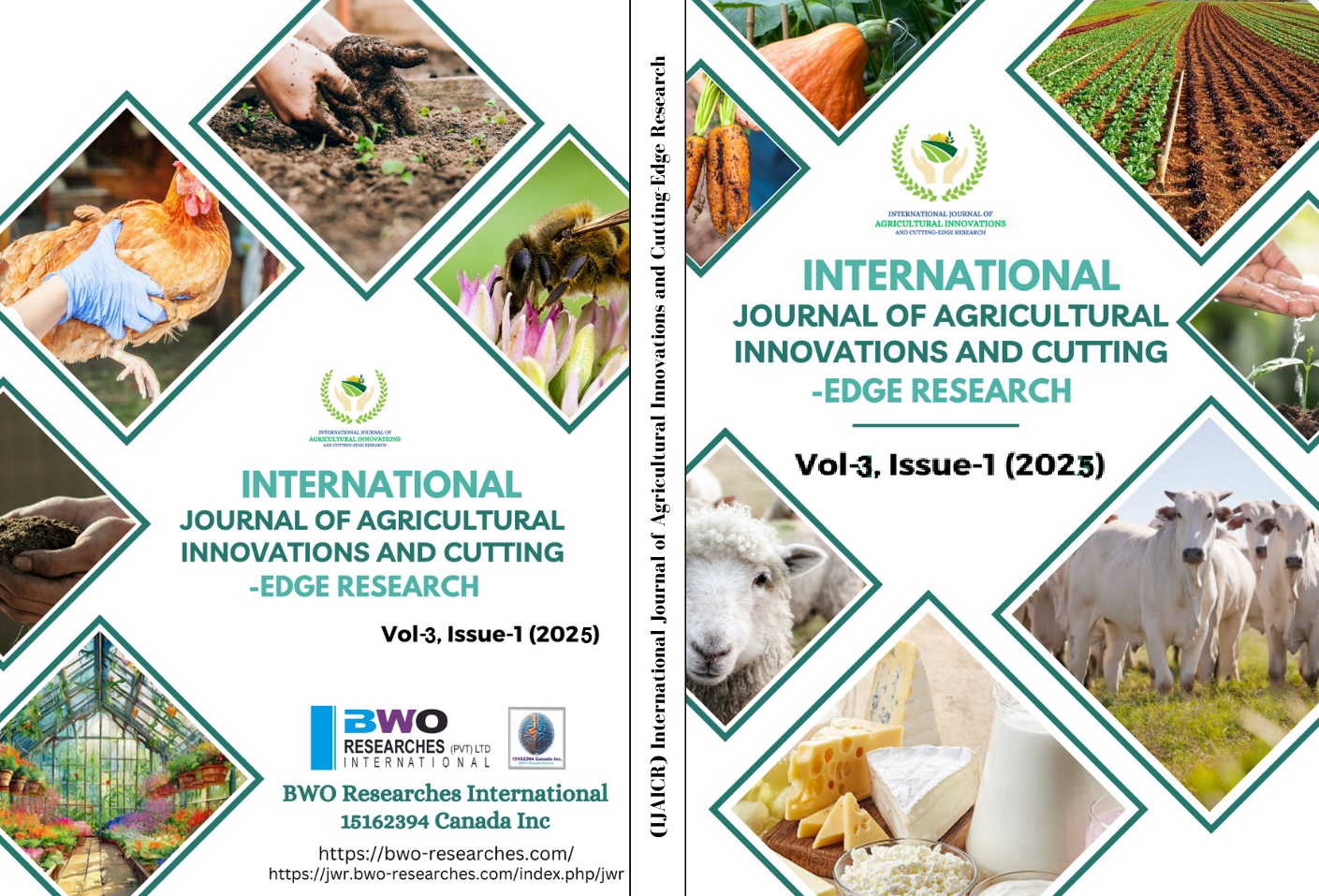Phytochemical Screening and Biological Investigation of Selected Medicinal Plants of District D. I. Khan
A Survey Study
Keywords:
Staphylococcus aureus, shade drying, Phytochemicals, Antioxidants, TerpenoidsAbstract
In terms of health and medicine, plants are vital to human existence. In the past, a wide variety of illnesses were treated with a variety of medicinal plants. For a phytochemical analysis, nine distinct medicinal plants were chosen from the isolated parts of District D.I. Khan, Khyber Pakhtunkhwa, Pakistan. These plants are often utilised locally for a variety of medical uses. Leaf samples from locally collected medicinal plants were gathered and utilized in tests after drying in the shade. The antioxidant activity of leaf extracts from collected plants was evaluated using a DPPH scavenging assay. Enzyme activity inhibitory effects were also assessed, as well as antibacterial and antifungal activities against Staphylococcus aureus and Aspergillus Niger, respectively. Amaranthus retroflexes, Winthania somniferous, Marsupium peregrine, and Pergamum harmala, four of the nine species, have demonstrated encouraging outcomes in terms of their antioxidant, antibacterial, antifungal, and anti-diabetic properties. Amaranthus retroflexes had a high potential for treating diabetes, while Winthania somniferous leaf displayed the best DPPH scavenging activity among the plants screened. The best results were obtained with Peganum harmala and Marsupium peregrinum against Aspergillus niger and Staphylococcus aureus, respectively. The research showed that the chosen medicinal herbs had potent antioxidant, antibacterial, and antifungal, as well as anti-diabetic capabilities. Furthermore, it was found that these plants possess antioxidant properties, which may be attributed to the high concentration of phytochemicals present in the samples.
References
Khan, A., Mehmood, S., Khan, N., & Khan, R. A. (2017). Cytotoxic activities of Rosa brunonii, Calligonum polygonoides, Pegnum harmala and Sueda fruticosa extract using brine shrimp. Pakistan Journal of Pharmaceutical Sciences, 30(6), 2281–2284.
Li, Y., Kong, D., Fu, Y., Sussman, M. R., & Wu, H. (2020). The effect of developmental and environmental factors on secondary metabolites in medicinal plants. Plant Physiology and Biochemistry, 148, 80–89. https://doi.org/10.1016/j.plaphy.2020.01.006
Malik, K., Ahmad, M., Zafar, M., Ullah, R., Mahmood, H. M., Parveen, B., Rashid, N., Sultana, S., Shah, S. N., & Lubna. (2019). An ethnobotanical study of medicinal plants used to treat skin diseases in northern Pakistan. BMC Complementary and Alternative Medicine, 19(1), 210. https://doi.org/10.1186/s12906-019-2605-6
Marwat, S. K., Fazal-Ur-Rehman, Khan, M. A., Ahmad, M., Zafar, M., & Ghulam, S. (2011). Medicinal folk recipes used as traditional phytotherapies in district Dera Ismail Khan, KPK, Pakistan. Pakistan Journal of Botany, 43(3), 1453–1462.
Shad, A. A., Ahmad, S., Ullah, R., Abdel-Salam, N. M., Fouad, H., Rehman, N. U., Hussain, H., & Saeed, W. (2014). Phytochemical and biological activities of four wild medicinal plants. Scientific World Journal, 2014. https://doi.org/10.1155/2014/857363
Ullah, M., Khan, M. U., Mahmood, A., Malik, R. N., Hussain, M., Wazir, S. M., Daud, M., & Shinwari, Z. K. (2013). An ethnobotanical survey of indigenous medicinal plants in Wana district south Waziristan agency, Pakistan. Journal of Ethnopharmacology, 150(3), 918–924. https://doi.org/10.1016/j.jep.2013.09.032
Ullah, S., Gul, J., Gul, F., Khan, S., Sher, J., & others. (2018). Antifungal and phytochemical screening of selected medicinal plants of Malamjaba, Swat, Pakistan. The Pharma Innovation, 7(5, Part C), 176.
van Wyk, A. S., & Prinsloo, G. (2018). Medicinal plant harvesting, sustainability and cultivation in South Africa. Biological Conservation, 227(July), 335–342. https://doi.org/10.1016/j.biocon.2018.09.018
Wadood, A. (2013). Phytochemical Analysis of Medicinal Plants Occurring in Local Area of Mardan. Biochemistry & Analytical Biochemistry, 02(04), 2–5. https://doi.org/10.4172/2161-1009.1000144
Wang, M., Firrman, J., Liu, L., & Yam, K. (2019). A review on flavonoid apigenin: Dietary intake, ADME, antimicrobial effects, and interactions with human gut microbiota. BioMed Research International, 3:13-23
Yaseen, G., Ahmad, M., Sultana, S., Suleiman Alharrasi, A., Hussain, J., Zafar, M., & Shafiq-Ur-Rehman. (2015). Ethnobotany of medicinal plants in the Thar Desert (Sindh) of Pakistan. Journal of Ethnopharmacology, 163, 43–59. https://doi.org/10.1016/j.jep.2014.12.053
Additional Files
Published
How to Cite
Issue
Section
License
Copyright (c) 2025 International Journal of Agriculture Innovations and Cutting-Edge Research (HEC Recognised)

This work is licensed under a Creative Commons Attribution-ShareAlike 4.0 International License.
BWO Research International
15162394 Canada Inc.,
Kitchener, ON, N2G2B3,
Canada

